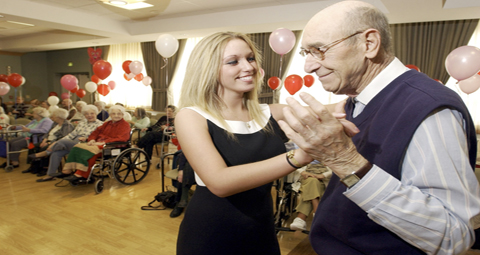January 25 | ![]() 0 COMMENTS
0 COMMENTS ![]() print
print

The intelligence inside of the aging process
By Fr Ronald Rolheiser
What can God and nature have had in mind when they designed the ageing process? Why is it that just when our mental prowess, our human maturity, and our emotional freedom are at their peak, the body begins to fall apart?
Our faith, of course, because it opens us to a perspective beyond our biological lives, sheds some light on these questions, though it doesn’t always give us a language within which to grasp more reflectively what is happening to us in the aging process. Sometimes a secular perspective can be helpful and that is the case here.
James Hillman, in a brilliant book on aging entitled, The Force of Character and Lasting Life, takes up these questions. What did God and nature have in mind when designing the aging process? He answers with a metaphor: The best wines have to be aged in cracked old barrels. The last years of our lives are meant to mellow the soul and most everything inside our biology conspires together to ensure that this happens. The soul must be properly aged before it leaves. There is intelligence inside of life, he asserts, that intends aging just as it intends growth in youth. It is a huge mistake to read the signs of aging as indications of dying rather than as initiations into another way of life. Each physical diminishment (from why we have to get up at night to go to the bathroom to why our skin sags and goes dry) is designed to mature the soul. And they do their work without our consent, relentlessly and ruthlessly.
The aging process, he asserts, eventually turns us all into monks and that, indeed, is its plan, just as it once pumped all those excessive hormones into our bodies to drive us out of our homes at puberty. And God again is in on this conspiracy. Aging isn’t always pleasant or easy; but there is a rhyme and reason to the process. Aging deliteralises biology. The soul finally gets to trump the body and it rises to the fore: “We can imagine aging as a transformation in beauty as much as in biology,” Hillman writes. “The old are like images on display that transpose biological life into imagination and art. The old become strikingly memorable, ancestral representations, characters in the play of civilization, each a unique, irreplaceable figure of value. Aging: an art form?”
Increasingly, as we age, our task is not productivity, but reflection, not utility, but character. In Hillman’s words: “Earlier years must focus on getting things done, while later years consider what was done and how.” The former is a function of generativity, we are meant to give our lives away; the latter is a function of dying, we are also meant to give our deaths away.
And the aging process raises a second series of questions: What value do the elderly have once their productive years are over? Indeed the same question might be asked of anyone who cannot be useful and productive in a practical sense: What is the value of someone living with Alzheimer’s? What is the value of people continuing to live on in palliative care when there is no chance of recovery or improvement and they have already slipped away from us mentally? What is the value of the life of a person who so mentally or physically challenged that by normal standards he or she cannot contribute anything?
Again, Hillman’s insights are a valuable supplement to the perspectives offered us through our faith. For Hillman, what aging and disability bring into the world is character. Not just their own. They help give character to the others. Thus, he writes: “Productivity is too narrow a measure of usefulness, disability too cramping a notion of helplessness. An old woman may be helpful simply as a figure valued for her character. Like a stone at the bottom of a riverbed, she may do nothing but stay still and hold her ground, but the river has to take her into account and alter its flow because of her. An older man by his sheer presence plays his part as a character in the drama of the family and neighbourhood. He has to be considered, and patterns adjusted simply because he is there. His character brings particular qualities to every scene, adds intricacy and depth by representing the past and the dead. When all the elderly are removed to retirement communities, the river flows smoothly back home. No disruptive rocks. Less character too.”
Aging and disability need to be regarded aesthetically. We are culture that does everything it can to deny, delay, and disguise aging. We put our elders away into separate homes, away from mainstream life, tucked away, no disruptive rocks for us to deal with. We are also a culture that is beginning to talk more and more about euthanasia, defining value purely by utility. If Hillman is right, and he is, than we are paying a high price for this, we have less character and less colour.











